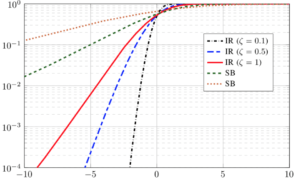 A Theoretical Channel Model for Spatial Fading in Retrodirective Backscatter Channels
A Theoretical Channel Model for Spatial Fading in Retrodirective Backscatter Channels
Mohammad Alhassoun ; Gregory D. Durgin
IEEE Transactions on Wireless Communications
Year: 2019 | Early Access Article | Publisher: IEEE
Abstract: The round-trip nature of backscatter communications subjects the radio link to unusually severe small-scale fading. Over fading channels, the received signal envelope in backscatter-based systems such as radio-frequency identification (RFID) systems fades worse than a standard one-way communication. In this paper, we study spatial fading of the received signal envelope in an important class of backscatter systems using retrodirective transponders that allow microwave and mm-wave communications at extraordinarily low-power consumption by an RF tag. Our comparative study shows that the use of retrodirective RF tags changes the backscatter channel statistics from being doubly faded to singly faded, resembling a conventional, one-way radio channel. Surprisingly, fading in retrodirective backscatter channels is highly varied and sensitive to the fine structure of the diffuse multipath waves in the radio environment in ways that fading in conventional radio links are not.